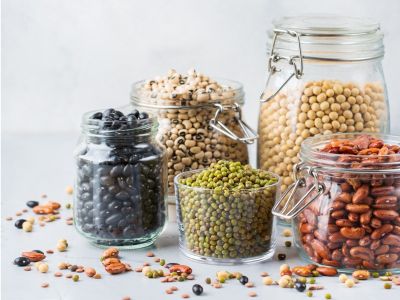How to Grow Beans At Home
Shell beans are one of the easiest crops to grow, harvest and dry. Beans require very little work and are loaded with nutrients. Many types of shell beans contain about 22% protein. Dried beans also provide plenty of fiber, zinc, iron and folic acid. To grow beans at home, choose a sunny spot with good drainage. Fertile soil works best, but beans are a nitrogen-fixing crop and actually help improve soil quality. In general, most types of shell bean seeds are sown 2 to 3 inches (5-7.6 cm.) apart in rows spaced 2 to 3 feet (.6-.9 m.) wide. Shell beans are most often direct-seeded into the ground after the danger of frost has passed. Once true leaves are present, mulching around the seedlings and between the rows helps prevent weeds and retain moisture. Until they are ready to harvest and dry, a bean’s basic requirements are weeding and watering as needed.
How to Dry Beans from the Garden
Learning how to dry beans after harvesting is easy. Shell beans can be harvested once the pods have turned brown and feel leathery. Pods can be hand-picked or the whole plant can be removed. Dried beans can be removed from the shell by hand or mechanically. To complete the drying process, place the bean seeds on trays in a warm, dry location. Shell beans can also be dried in a food dehydrator set at 90 degrees F. (32 C). Once moisture levels in the shell beans reach 15% or less, the beans can be stored for up to three years in glass jars, plastic bags or metal tins.
Grow and Dry Beans – Types and Varieties
If you wish to grow and dry beans from your home garden, it’s advisable to start with the types of beans you regularly use. Here are five common shell bean types, their primary uses and popular varieties you may wish to try:
- Lima – These flat, creamy white beans have a buttery-rich flavor and are ideal for soups, stews or casseroles. Look for lima varieties like “Fordhook,” “Henderson” or “King of the Garden.”
- Kidney – Named for their shape, these reddish-brown beans are often one of the main ingredients in Chili Con Carne. Choose from light red varieties like “Pink Panther” and “Blush” or dark red kidney beans such as “Red Hawk” and “Fiero.”
- Northern – The favored legume for Boston baked beans, great northern beans easily absorb the flavors of spices and other foods in which they are cooked. Check out varieties like “Orion” or “Beryl.”
- Pinto – Popular in Mexican and Tex-Mex cuisine, the flavor of this oval-shaped bean is best described as earthy or nutty. Uncooked pinto beans have mottled brown and beige skin, which turns all brown when cooked. Select a variety like “Quincy” or “Burke” to star in your next batch of refried beans.
- Black – Also known as turtle beans, these small, black-skinned beans have a sweet, earthy flavor. Black beans retain their dark color when cooked and add contrast to soups, salads and pizza. To prevent color bleed, rinse cooked beans before adding to dishes. Popular varieties include “Eclipse” and “Black Coco.”
